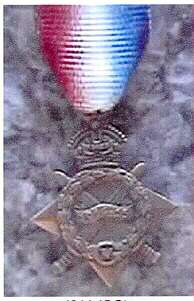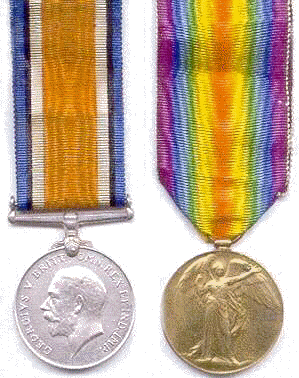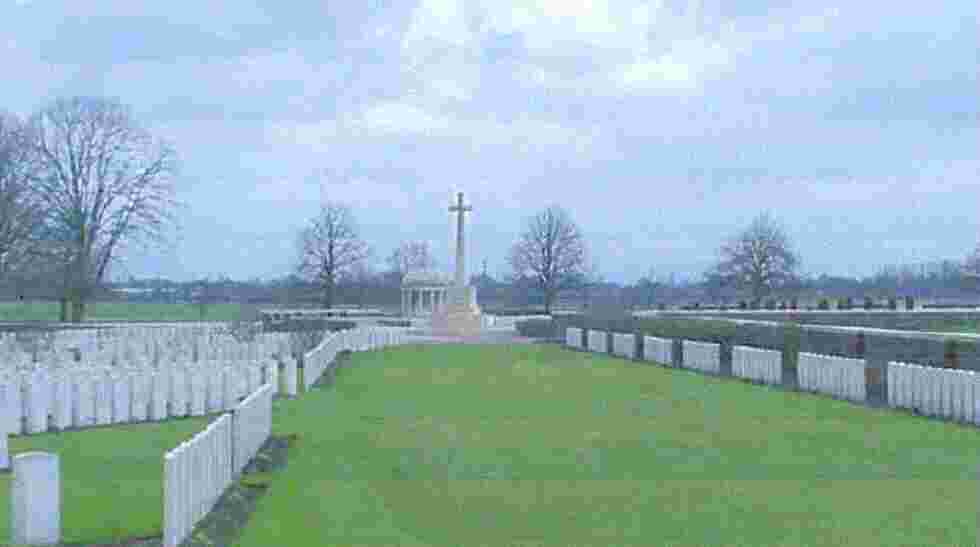

MINNS, Leonard Charles
Private 16464
1st Battalion,
Suffolk Regiment
84th Brigade, 28th Division
who died on
Sunday, 18th April 1915. Aged 19
Leonard was born in Bungay in Suffolk. He enlisted at Bury Saint Edmunds. He lived and worked at Langenhoe Wick Farm. After the war his next of kin was listed as his father, Mr Charles Minns living at 52 Ferry Cottages, Sudbourne, Orford, Suffolk.
The 1901 Census shows many Minns both born and living in Bungay. Included on the list are two brothers both aged 7, who are the sons of Harry Edwin Minns and Alice Victoria Minns of 3 Castle Lane, Bungay. They are :- Harry Edwin Minns, who died on Saturday 11th August 1917 aged 23, while serving as Private 14866 with the 8th Battalion the Norfolk Regiment at Ypres; and his brother Charles William Minns, Private 320242 with the 12th Battalion the Norfolk Regiment. He is buried at Outtersteene Communal Cemetery having been killed 19th August 1916. It is possible they were Leonard's cousins.
At the outbreak of war, the 1st Battalion were in Khartoum, Sudan. They were brought back to the UK on the 23rd October1914 and they were formed into the 84th Brigade as part of the 28th Division on the 17th November 1914 . Leonard joined them about this date.
The Division crossed to Le Havre in January 1915 where the 1st Battalion Suffolks joined their 2nd Battalion fighting under terrible conditions. For example during the month of February they had been in the Verbrandenmolen sector. On the 15th February they were in temporary trenches, to the south of Ypres and west of the canal. These so-called trenches consisted of banks, which did not provide any cover and ditches mostly waist-deep in water. Part of this trench system was in enemy hands. 'C' company was ordered to hold part of this system it till morning but when they arrived, however, they learned that the main part of the trench was in the hands of the enemy. As they moved forward the front platoon of 'C' company were stopped by grenade and machine-gun fire. All attempts to get beyond this point failed and the company suffered heavy casualties during the rest of the night. By dawn all survivors had been taken prisoner. Two platoons, in support near the wood on the canal, were later ordered up to make an attack to recover the position but the attack had to be aborted due to daybreak. They spent 2 days standing in icy water. During these two weeks they lost 300 casualties.
Leonard landed in France on the 1st April 1915, as one of the replacements. He died just 18 days later.
On April 12th the 1st Battalion marched from Dranoute to Poperinghe, passing through Westoutre, where the 2nd Battalion were in billets. In this little Flemish village was added a memorable page in the long, long annals of the regiment. The 1st & 2nd Battalions met on Active Service.

Copyright Imperial War Museum (c) Q50438
On April 15th the battalion marched to Vlamertinghe, moving forward to Zonnebeke two days later. On the way up to the trenches they were halted so that if required to, they could support the action then in progress at Hill 60. However, they were not required and soon after midnight relieved the 2nd Cheshires. Two companies were in the line; another was about a thousand yards in the rear of them; and the remaining company in dugouts in the railway embankment, about two miles away. On April 18th the enemy opened a fierce bombardment on a wide front. It was during this bombardment that Leonard was killed.
Leonard had been killed just a few days prior to the 2nd Battle of Ypres, which started 22nd April and when the British and the Suffolks in particular suffered heavily under both HE and gas.


Leonard was entitled to the British War Medal and the Allied Victory Medal. He also earned the 1914-1915 Star shown on the left.
Cemetery: BEDFORD HOUSE CEMETERY Ieper, West-Vlaanderen, Belgium
Grave or Reference Panel Number: Enclosure No.4 XI. AA. 47.

Location: Bedford House Cemetery is located 2.5 Km south of Ieper town centre. The cemetery lies on the Rijselseweg (N365), the road connecting Ieper to Armentieres. From Ieper town centre the Rijselsestraat runs from the market square, through the Lille Gate (Rijselpoort) and directly over the crossroads with the Ieper ring road. The road name then changes to the Rijselseweg. The cemetery itself is located 2 Km after this crossroads on the left hand side of the Rijselseweg.
Historical Information: Zillebeke village and most of the commune were in British hands during the greater part of the War; but the number of cemeteries in the neighbourhood bears witness to the fierce fighting in the vicinity from 1914 to 1918. Bedford House, sometimes known as Woodcote House, were the names given by the Army to the Chateau Rosendal, 1,830 metres South of the Lille Gate of Ypres. It was a country house in a small wooded park, with moats. It never fell into enemy hands, but the house and the trees were gradually destroyed by shell fire. It was used by Field Ambulances, and as the Headquarters of Brigades and other fighting units; and charcoal pits were started in October, 1917. The property became, in time, largely covered by small cemeteries. Five Enclosures existed at the date of the Armistice; but the graves from No. 1 were then removed to White House Cemetery, St. Jean, and those from No. 5 to Aeroplane Cemetery, Ypres. Enclosure No. 2 was begun in December, 1915, and used until October, 1918; and after the Armistice 437 graves were added, all but four of which came from the Ecole de Bienfaisance and Asylum British Cemeteries, both at Ypres. There are over 30 unidentified graves and special memorials are erected (in No. 4) to 24 United Kingdom soldiers and one Australian, known or believed to be buried among them. Other special memorials (in No. 2) record the names of two United Kingdom soldiers, buried in the two cemeteries at Ypres, whose graves were destroyed by shell fire. Certain graves in Plots VII, VIII and XV, identified collectively but not individually, are marked by headstones inscribed: 'Buried near this spot'. Enclosure No. 3, the smallest, was used from February, 1915, to December, 1916; the burials in August-October, 1915, were largely carried out by the 17th Division. Enclosure No. 4, the largest, was used from June, 1916, to February, 1918, largely by the 47th (London) Division; and after the Armistice it was enlarged by the concentration of 3,324 graves from other burial grounds and from the battlefields of the Ypres Salient. Almost two-thirds of the graves are unidentified and special memorials are erected to 20 soldiers from the United Kingdom known or believed to be buried among them. Other special memorials record the names of 25 soldiers from the United Kingdom, buried in other cemeteries, whose graves could not be found. Enclosure No. 6 was made in 1930's from the concentration of graves from the battlefield of the Ypres Salient. There are also graves of the 1939-1945 War, all of them soldiers of the British Army, who died in the defence of the Ypres-Comines canal and railway at the end of May 1940. It lies on high ground on the west side of the cemetery. There are now 5142, 1914-18 and 66, 1939-45 Commonwealth war casualties commemorated in all four sites, 3014 casualties of the first world war are unidentified. Also commemorated here are 2 Foreign National casualties. Enclosures 2, 3, and 4 cover an area of 21,541 square metres. They are bounded on the North by a moat and on the other sides by a rubble wall. The following were burial grounds from which British graves were concentrated to Bedford House:- ASYLUM BRITISH CEMETERY, YPRES, was established in the grounds of a mental hospital (the Hospice du Sacre Coeur) a little West of the railway station, between the Poperinghe road and the railway. It was used by Field Ambulances and fighting units from February, 1915, to November, 1917, and it contained the graves of 265 soldiers from the United Kingdom, nine from Canada, seven from Australia and two of the British West Indies Regiment. BOESINGHE FRENCH CEMETERY No. 2, a little South of Bard Cottage, contained the grave of one soldier from the United Kingdom. DROOGENBROODHOEK GERMAN CEMETERY, MOORSLEDE, contained the graves of two United Kingdom soldiers who fell in October, 1914. ECOLE DE BIENFAISANCE CEMETERY, YPRES, was on the North side of the Poperinghe road, immediately West of the railway, in the grounds of a school (now rebuilt). It was used by Field Ambulances in 1915-1917, and it contained the graves of 133 soldiers from the United Kingdom, three from Canada, three from Australia and one of the British West Indies Regiment. KERKHOVE CHURCHYARD contained the graves of five United Kingdom soldiers, who fell in October and November, 1918, and seven German. POELCAPELLE GERMAN CEMETERY No. 4, between Langemarck and the Poelcapelle-St. Julien road, contained the graves of 52 soldiers from the United Kingdom who fell in 1914 and 1916. ZONNEBEKE BRITISH CEMETERIES No. 1 and No. 3 were on the South and North sides respectively of the Broodseinde-Zonnebeke road. Zonnebeke was occupied by the Germans on the 22nd October, 1914, retaken by the French on the following day, and evacuated at the beginning of May, 1915; retaken by British troops on the 26th September, 1917; evacuated again in April, 1918; and retaken by Belgian troops on the 28th September, 1918. Four British Cemeteries were made by the Germans on the Broodseinde-Zonnebeke road; No. 1 contained the graves of 31 United Kingdom soldiers (mainly 2nd East Surrey) who fell in April, 1915, and No. 3 those of 69 who fell in April, and May, 1915.
11/04/02 date last updated
references:-
Leonard's death and the fact he lived at Wick Farm are from the Essex County Standard July 3rd 1915. His Service records have not survived at the PRO
Details of his grave were kindly provided by the Commonwealth War Graves Commission
We indebted to the Imperial War Museum for the picture of the 1st Battalion Suffolk Regiment. and also to the Bury St. Edmunds Record Office for their assistance in compiling these pages.
Information on the role of the 1st Battalion is taken from a number of sources including "The History of the Suffolk Regiment 1914-1927 " by E. A H. Webb
**********************************************************
These pages are dedicated to the memory of the Fallen from the two World Wars, who lived in Abberton & Langenhoe.. Prepared by Saint Andrew's Parochial Church Council. November 11th 2000